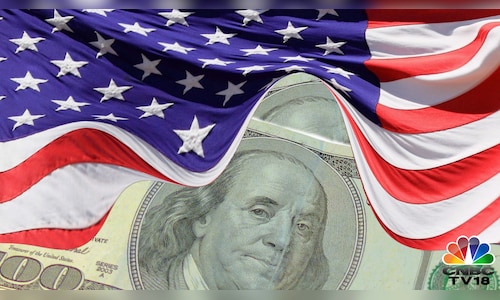The tested strategy sent a Bloomberg gauge of the greenback up the most in three weeks. The currencies tied to Trump’s targets — Mexico’s peso, Canada’s loonie and China’s offshore yuan — all slid after the US president’s remarks.
“Much has been said about the market’s fatigue in responding to each and every tariff headline – that is not what is on display today,” said Kyle Chapman, a foreign-exchange markets analyst at Ballinger Group in London.
The Canadian dollar was down about 0.7%, the peso about 0.3%, and the yuan around 0.4% against the greenback toward the end of the New York session.
Buying the greenback has been a cornerstone of the so-called “Trump trade” since the Republican’s days on the campaign trail, catching steam in the wake of his November election. Investors viewed a mix of tariffs, tax cuts and deregulation as likely to drive inflation in the US and support bond yields.
However, that conviction has faded in recent weeks as fatigue about contradictory vows — combined with concern about the negative growth impacts of tariffs — came into focus. The Bloomberg Dollar Spot Index gained roughly 4.5% from Election Day through January 15. Since then, it’s down about 1.5%.
“If and when these tariffs actually go into effect, we could see a further run for the Bloomberg Dollar Spot Index, but it’s important to note that they may not be permanent,” said Helen Given, a foreign-exchange trader at Monex. “While volatility is a given, sustained dollar strength is not necessarily.”
The peso, which has been whipsawed by tariff headlines since Trump’s return to the White House, initially fell as much as 0.6% on his Thursday remarks.
“The whole idea is being perceived as just a tool to get a deal on other issues,” said Marco Oviedo, a strategist at XP Investimentos.
Still, other measures of sentiment in the derivatives market suggest traders are hedging against sharp declines in currencies of economies targeted by Trump’s trade policy.
A gauge tracking near-term depreciation expectations in the Canadian dollar soared Thursday after Trump’s announcement, on track for the most loonie-bearish close in February. Options markets also moved to price in bigger swings.
Over the past couple months, traders have consistently paid more for call options — bets on the dollar to rise against the loonie — than puts that look for the pair to fall. Risk reversals on the pair, or the premium of calls over puts, have also spiked in recent days days.
The developments will also increase trader focus on China’s daily reference rate for the yuan in coming sessions, to see how authorities respond to the currency’s weakness. China’s National People’s Congress will begin its annual meeting on March 5, giving leaders a chance to set the economic direction and lay out spending plans for the year ahead.


